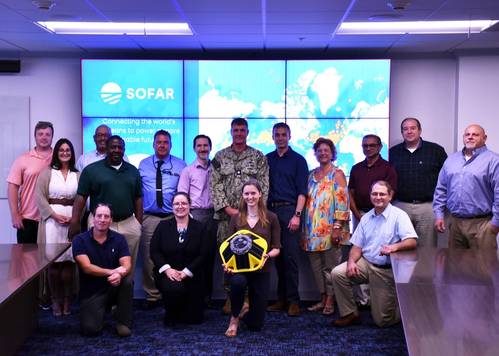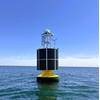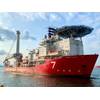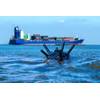US Navy Taps Into Sofar Ocean's Data Buoy Network for Weather Forecasting
Naval Meteorology and Oceanography Command (Naval Oceanography) and technology startup Sofar Ocean announced the signing of a five-year Cooperative Research and Development Agreement (CRADA) to advance the U.S. Navy’s ocean weather forecasting and data collection capabilities. The organizations launched their strategic partnership at a joint knowledge sharing event on July 17-18 at Naval Oceanography’s headquarters at NASA’s Stennis Space Center.
“CRADAs with partners like Sofar Ocean allow us to capitalize on the expertise between our organizations. Sofar’s technology contributes to the core capabilities of collecting accurate data and delivering at the speed and scale required to make the difference in operational warfighting advantage, increased battlespace awareness, and ensure safety of flight and navigation,” said Rear Adm. Ronald J. Piret, Oceanographer of the Navy and Commander, U.S. Naval Meteorology and Oceanography Command. “Our industry partners play a vital role in the naval research enterprise and CRADAs ensure Naval Meteorology and Oceanography can harness technological innovation to enable informed decision making by operational commanders.”
Naval Oceanography’s mission is to define and apply the physical environment to ensure that the Navy has freedom of action in any battlespace. To accomplish this mission, Naval Oceanography seeks to advance the state-of-the-art for ocean data collection and prediction, an objective that it shares with Sofar. The San Francisco-based company has deployed a global network of marine weather sensors, known as Spotter buoys, that collects thousands of ground truth observations each day. Sofar assimilates these observations of wave spectra, wind, sea surface temperature, and barometric pressure into its operational ocean weather forecasts to increase their accuracy. Sofar’s forecasts are the foundation of its maritime solutions, which include voyage optimization, extreme weather monitoring, and more.
“Strategic partnerships are essential to unlocking ocean data at scale and increasing marine weather forecast accuracy,” said Dr. Tim Janssen, CEO and Co-Founder of Sofar Ocean. “Our CRADA with Naval Oceanography will expand our ability to collect and assimilate real-time ocean data, and ultimately lead to support for marine operations using more accurate information and forecasts.”
At the inaugural knowledge sharing event representatives from Naval Oceanography and Sofar gave presentations, facilitated discussion, and identified potential areas of collaboration around three primary topics: hardware for ocean data collection, data assimilation and data-as-a-service (DaaS) and data management.
At the event, Sofar highlighted its Spotter and Smart Mooring marine sensing devices; the development of the Bristlemouth open ocean connectivity standard; its approach to ensemble-based data assimilation and coupled modeling; and its DaaS products. Representatives from Naval Oceanography’s subordinate commands and partners — the Naval Oceanographic Office (NAVOCEANO), the Fleet Numerical Meteorology and Oceanography Center (FNMOC), and the Naval Research Laboratory (NRL) — also attended the event. The groups provided critical insights about hardware deployment capabilities, data needs, and the Verification and Validation (V&V) process. NAVOCEANO, FNMOC, and NRL will each play a central role in the identification of use cases for Sofar’s marine sensing devices, data assimilation approach, and DaaS products that advance the Navy’s operations.
“Our working relationship with Sofar Ocean leadership has been cultivated for over a decade starting with the Naval Postgraduate School and the Office of Naval Research,” said Dr. Joseph Calantoni, Technical Director, U.S. Naval Meteorology and Oceanography Command. “The formal relationship between CNMOC and Sofar Ocean is a success story that demonstrates the effectiveness of the Naval Research Enterprise to foster innovative technology and eventually move that capability to the warfighter.”
Naval Oceanography and Sofar’s CRADA follows the successful Limited Partnership-CRADA (LP-CRADA) between the U.S. National Ice Center (USNIC) and Sofar. Last summer, USNIC, which is subordinate to Naval Oceanography and operated by the Navy, the National Oceanic and Atmospheric Administration (NOAA), and the U.S. Coast Guard, deployed five of Sofar’s Spotter buoys in the Arctic during the USCGC Healy’s patrol to the North Pole. The buoys collected valuable metocean observations in a historically data-sparse region.
In the coming months, Naval Oceanography and Sofar will host an additional knowledge sharing event and solidify collaboration objectives that further the Navy’s forecasting and data collection capabilities.
















 February 2024
February 2024



